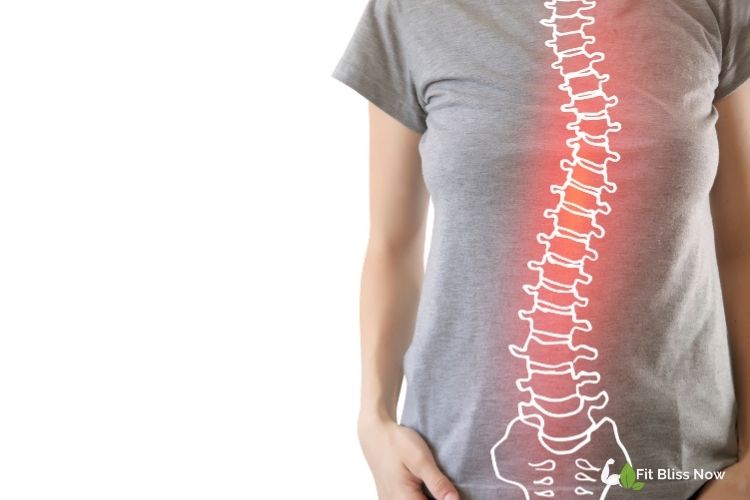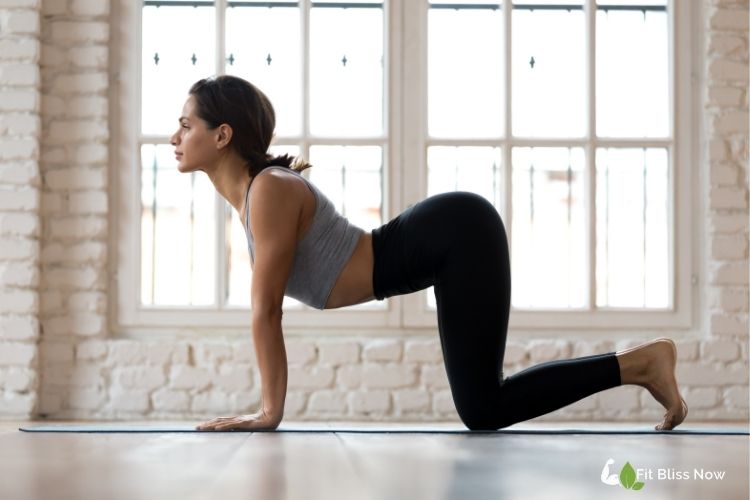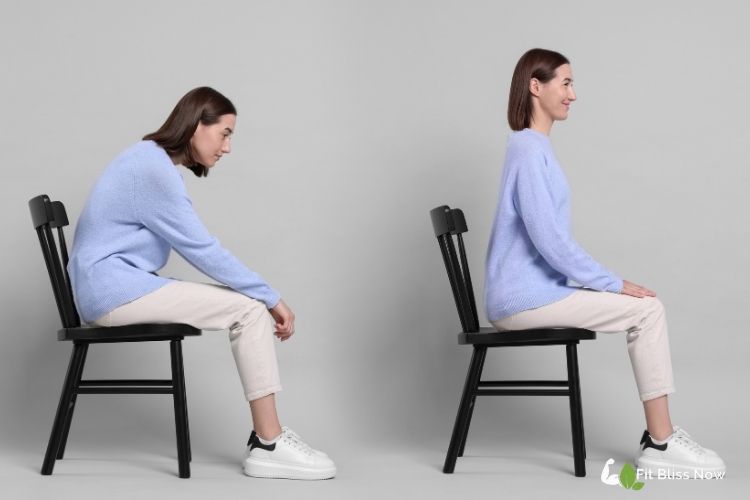Discover everything you need to know about scoliosis and learn how to manage the condition at home with practical strategies including exercises, posture correction, and lifestyle adjustments.
What Is Scoliosis?
Scoliosis is a condition characterized by an abnormal lateral curvature of the spine, often appearing as an “S” or “C” shape when viewed from behind. It can affect both children and adults, and its severity ranges from mild to severe.
This spinal curvature can be structurally permanent or functional and temporary, depending on the root cause.

What Is Scoliosis?
Types of Scoliosis
There are several different types of scoliosis, each with its own cause and age of onset:
Idiopathic Scoliosis: The most common type, often detected during adolescence. Its cause is unknown.
Congenital Scoliosis: Caused by spinal malformations present at birth.
Neuromuscular Scoliosis: Linked to neurological or muscular diseases like cerebral palsy or muscular dystrophy.
Degenerative Scoliosis: Often affects adults due to aging and disc deterioration.
What Causes Scoliosis?
In the majority of idiopathic cases, the exact cause remains unclear. However, factors such as genetics, birth defects, nerve disorders, tumors, or previous spinal surgeries can contribute to scoliosis. Even poor posture habits, leg length discrepancies, or asymmetric sports may influence functional scoliosis in mild cases.
Signs and Symptoms of Scoliosis
While some people may not experience noticeable symptoms, others may observe:
Uneven shoulders or hips
A prominent shoulder blade
Rib hump (when bending forward)
Leaning more to one side
Back pain, especially in adults
Fatigue after prolonged standing or sitting
Difficulty breathing (in severe cases)

What Is Scoliosis ?
Can Scoliosis Be Managed at Home?
While medical interventions are necessary in some cases, home-based care can help in managing mild scoliosis and improving spinal health, comfort, and posture.
How Is Scoliosis Diagnosed?
Diagnosis usually involves:
Physical examination (Adam’s Forward Bend Test)
X-rays to measure the Cobb angle (degree of spine curvature)
MRI or CT scans in complicated or neurological cases
A Cobb angle above 10 degrees typically indicates scoliosis. Curves between 10–25 degrees are often monitored; more severe curves may require treatment.
Effective Home Strategies for Managing Scoliosis
1. Daily Stretching and Mobility Work
Targeted stretching helps relieve tightness in back muscles and improves mobility:
Cat-Cow Stretch
Child’s Pose
Spinal twists (gentle)
Hamstring stretches
⚠️ Always perform stretches under guidance if you’re unsure. Overstretching can aggravate scoliosis.

What Is Scoliosis?
2. Strengthening the Core Muscles
A strong core supports the spine and reduces pressure on spinal discs.
Recommended exercises:
Bird-Dogs
Pelvic Tilts
Glute Bridges
Side Planks
Strengthen both sides of your body evenly. Avoid asymmetric movements unless directed by a therapist.
3. Yoga and Pilates
These practices enhance body awareness, posture control, and flexibility. Ideal poses include:
Mountain Pose
Triangle Pose
Bridge Pose
Cobra Pose
Avoid intense spinal twists or backbends unless approved by a medical expert.

What Is Scoliosis ?
4. Postural Awareness and Correction
Poor posture can worsen curvature over time. Use the following tips daily:
Sit upright with your hips and shoulders aligned
Use lumbar support when sitting
Avoid slouching over phones or laptops
Practice wall posture checks regularly
5. Ergonomic Work and Study Spaces
Setting up your home or office with ergonomics in mind is key:
Monitor should be at eye level
Feet should rest flat on the ground
Avoid twisting when typing or writing
Use a chair with adjustable lumbar support

What Is Scoliosis ?
6. Managing Pain Naturally
For mild scoliosis-related pain, try:
Heat therapy for muscle relaxation
Cold packs for inflammation
Topical analgesic creams
Gentle massage or foam rolling
7. Cardiovascular Activity
Low-impact cardio helps maintain a healthy weight and improves circulation:
Swimming (especially beneficial for spine support)
Walking
Cycling (with proper seat height)
Avoid high-impact sports without guidance, especially if the curve is moderate to severe.
8. Healthy Weight and Diet
Excess weight places strain on the spine. A scoliosis-friendly diet includes:
Calcium (leafy greens, dairy)
Magnesium (nuts, seeds, legumes)
Vitamin D (sunlight, fatty fish)
Omega-3s (flaxseed, salmon)
💡 Maintain hydration and avoid inflammatory foods (excess sugar, processed items).

What Is Scoliosis?
9. Breathing Exercises and Mindfulness
Severe scoliosis can reduce lung capacity. Try:
Diaphragmatic breathing
Box breathing (4-4-4-4 rhythm)
Meditation or guided relaxation
These methods also reduce anxiety and increase mind-body connection.
10. Tracking Progress at Home
Use a journal or app to log:
Daily pain levels
Activity duration
Mood and energy
Posture observations
This helps identify patterns and measure the effectiveness of your home care routine.
When to Seek Medical Attention
Home care is not a substitute for professional evaluation in progressing cases. Seek help if:
Spinal curve worsens rapidly
Pain is severe or constant
Noticeable physical imbalance develops
Breathing or mobility becomes impaired

What Is Scoliosis ?
Common Medical Treatments (for Reference)
Bracing: Used mainly for growing children with moderate curves
Physical Therapy: Tailored programs under expert supervision
Surgery (Spinal Fusion): Recommended in curves >40–50°
Chiropractic Adjustments: Controversial but sometimes beneficial for pain relief (avoid manipulation of severe curves)
Emotional Support and Social Life
Living with scoliosis can impact confidence, especially in teens.
Tips for support:
Join scoliosis forums or support groups
Celebrate small wins
Use scoliosis-friendly fashion to improve confidence
Involve friends and family in your care journey
Daily Checklist for Scoliosis Management
✅ Stretch for 15–30 minutes
✅ Do 2–3 core-strengthening exercises
✅ Eat a spine-friendly diet
✅ Sit and stand with proper posture
✅ Take 5-minute movement breaks each hour
✅ Use a supportive mattress and pillow
✅ Reflect on your day and note symptoms

What Is Scoliosis ?
Final Thoughts
While scoliosis presents unique challenges, it doesn’t have to limit your life. With proper home strategies, you can support your spine, improve posture, and reduce discomfort. The key lies in early detection, daily awareness, and knowing when to seek help.


